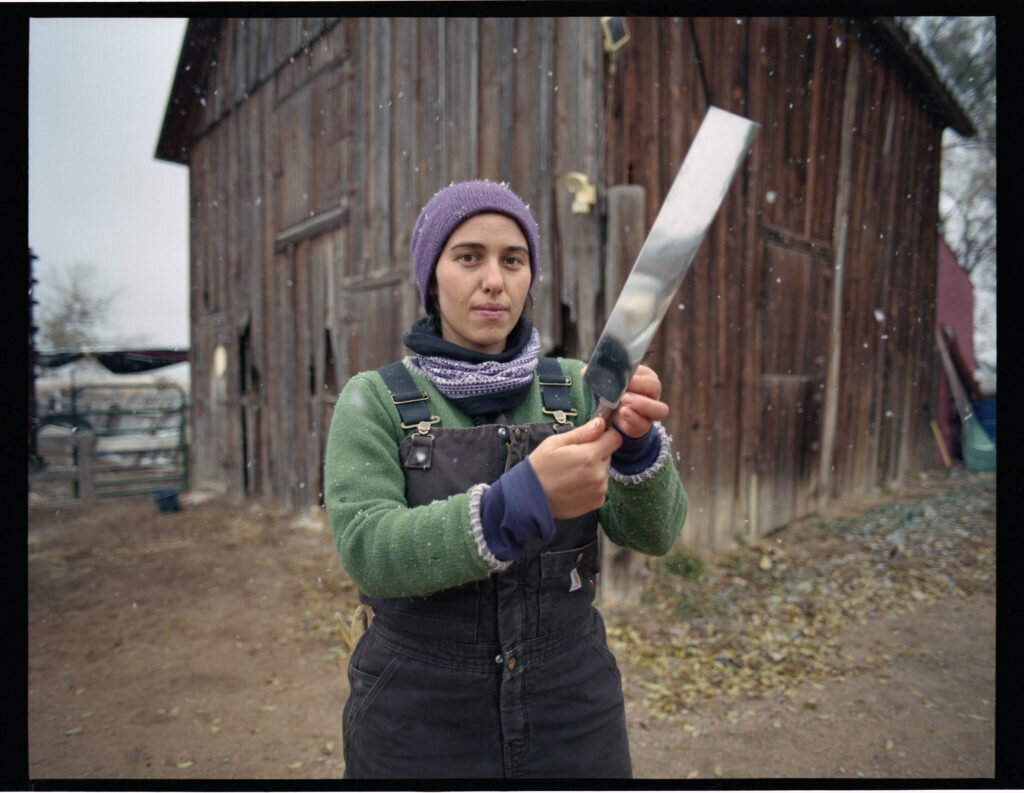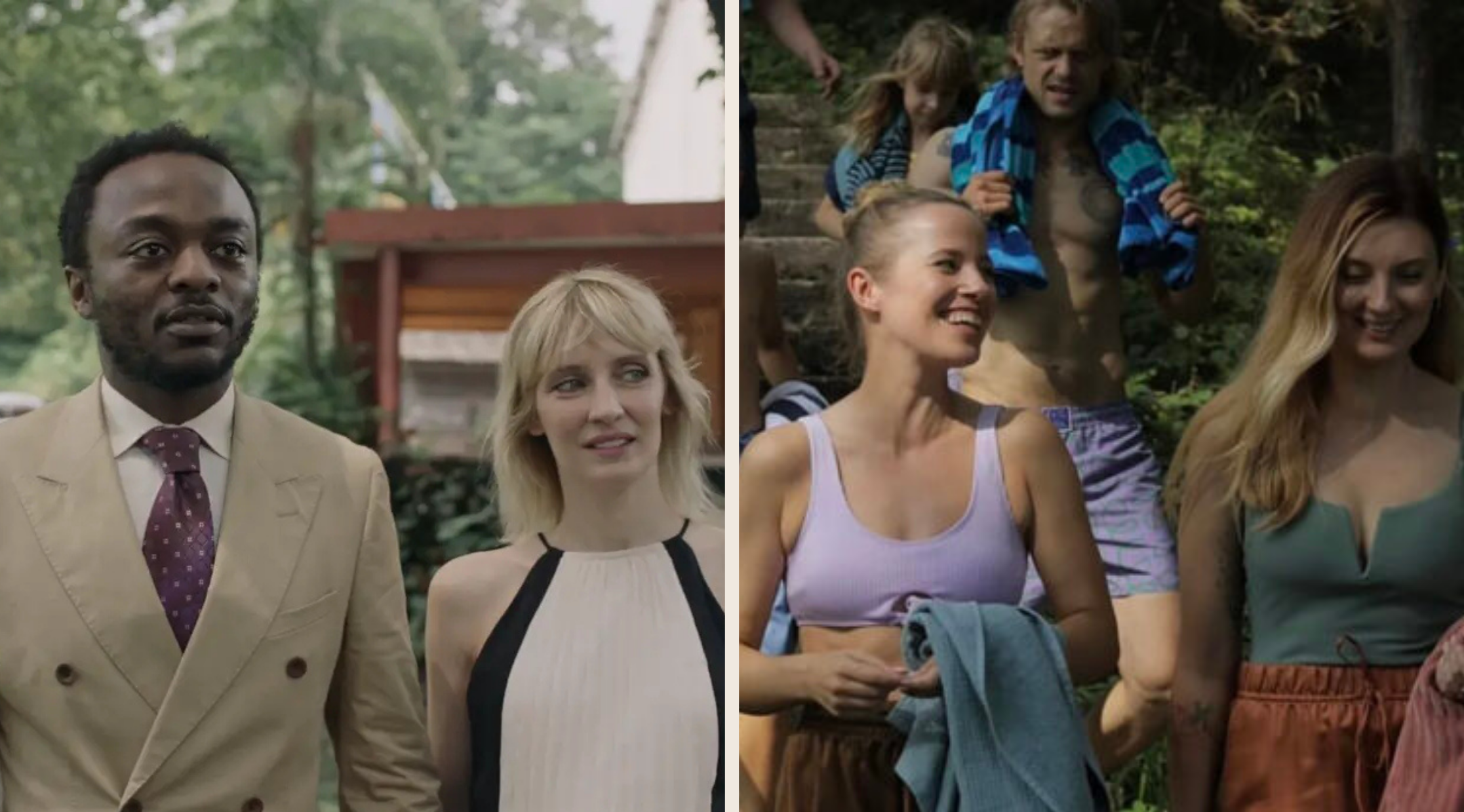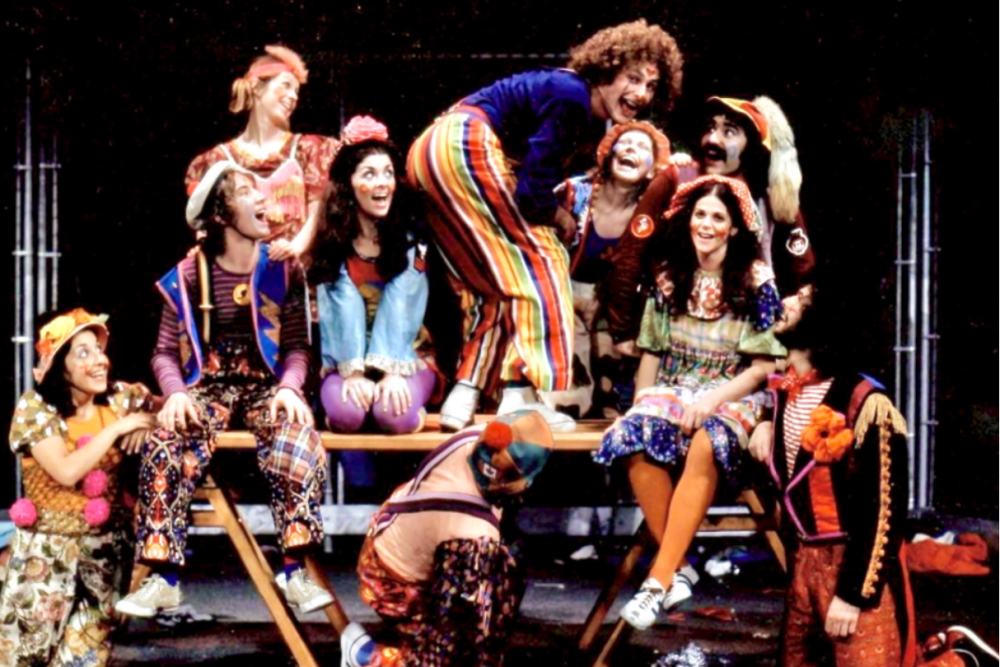Food for the Rest of Us explores radical activism through farming
The feature documentary, premiering at DOXA, digs deep into how marginalized communities are leading the way when it comes to being connected to the land and to our food
Eric Person is an American Black-Indigenous urban farmer who aims to decolonize people’s diets and who is featured in Food for the Rest of Us.
Food for the Rest of Us premieres at the 2021 DOXA International Documentary Festival, taking place online from May 6 to 16.
BEST KNOWN AS a tropical paradise to tourists, Hawaii has a problem with its food supply: 80 to 90 percent of it is imported. Overdevelopment, homelessness, and high cost of living are just some of the factors that have led to a growing disconnect between locals and the land. The situation is especially acute in Wai’ane, a community on the west side of O’ahu. It’s home to the world’s largest population of native Hawaiians, where much of the population lives in poverty that can be traced back to colonialism and is fuelled by low educational attainment.
In ancient times, the sunny, fertile region produced an abundance of food, sustainably. For more than two decades, MAʻO Organic Farms has been working to get the region and its people back to their roots. By growing and harvesting organic fruits and vegetables, the social enterprise trains and mentors youth to become thriving community leaders and entrepreneurs. The thinking is simple: when youth cultivate the land, the land cultivates them.
“What we’re doing here is revolutionary AF,” says Flame Porter, one of the MA‘O farmers, in Food for the Rest of Us, a feature documentary that has its world premiere at the 2021 DOXA Documentary Film Festival. “We’re educating mindsets about using the land righteously, growing food organically.”
Porter went on to earn his Bachelor’s degree in sustainable community food systems from the University of Hawaii. The folks from Ma’o are among those who are making real world change through food who are featured in the new film.
We meet Eric Person, a black-Indigenous urban farmer who establishes gardens in impoverished black, brown, and working-class neighbourhoods in the U.S. In one scene in Kansas, while he’s describing various plants, we hear gunshots. The film introduces us to Tzuria Malpica, who teaches workshops in kosher slaughter in Boulder, Colorado. A rare female in the field, she sees ritual slaughter as a way to be connected to the land and to ethically process meat. She does everything with mindfulness and intention (including folding gratitude into her freshly baked bread) and works closely with members of the queer community, who are underrepresented within the context of rural outdoor spaces—and who need those spaces to be safe. And we get to know Marjorie Ovayuak, an Inuit elder who calls Tuktoyaktuk home. In between clips of her catching her own fish, she describes the way she can feel the land changing beneath her feet, sinking and slipping into the Arctic Ocean because of climate change.
Far-reaching and fascinating, Food for the Rest of Us is directed by Caroline Cox, a self-taught cinematographer and folk musician who lives off-grid in the Northwest Territories. She co-produced the film with Tiffany Ayalik, Inuk from the Kitikmeot region in Nunavut; and Jerri Thrasher, an Inuvialuit film writer/director, television producer, and owner of Inuvik’s Gyrfalcon Productions. Ayalik is also a Juno-award winning musician, one half of throat-singing duo PIQSIQ with her sister, Inuksuk Mackay. (Stuart Henderson is executive producer of the Copper Quartz Media film, made in partnership with Telefilm Canada, the Canada Media Fund, and 90th Parallel Production.)
Cox and Ayalik first started working together a few years ago on a small northern cable-TV show called Wild Kitchen. They travelled throughout the Northwest Territories and featured people who were closely connected to their food, whether through hunting, trapping, growing, fishing, or foraging. The two made companion tutorial videos, and their following and food community grew internationally.
“We started to see is that this isn’t just about food,” Ayalik says in an interview alongside Cox via Zoom with Stir. “This is about politics, this is about activism, this is about liberation, and lo and behold, who was at the forefront of these conversations were often the most marginalized: Black, Indigenous, people of colour, the newcomer community, queer folks. We wanted to take that food conversation across North America. The food movement looks completely different depending on the region, but the heart, the impulse, is universal.”
Tzuria Malpica teaches ritual kosher slaughter and works closely with members of the queer community.
The team shot Food for the Rest of Us pre-COVID-19, but the importance of being connected to your food couldn’t be a more timely message given the empty store shelves we witnessed early in the pandemic.
For Person, growing his own food is liberation from food apartheid; it’s a way to honour his ancestors, some of whom were slaves. In decolonizing food, he’s teaching the next generation of farmers not just how to produce foods like cucumbers and peppers but how to transform their lives. “Growing your own food is the most revolutionary thing you can do,” Person says in the film.
Food for the Rest of Us touches on absurd realities such as the fact that a bag of flour in the north costs $35; no wonder people on limited incomes are more inclined to buy fast food. Fresh produce is nearly non-existent there.
Through collaborative efforts with organizations such as Story Money Impact (the Canadian producer of Good Pitch), which connects filmmakers to people working to improve things in related sectors, the Food crew wants to ensure that high-priority communities, including those in the North and in inner cities, have an opportunity to see the film, all to create lasting positive change. Cox hopes the film will help shift the paradigm when it comes to being more connected to our food—and then some.
“We want to raise awareness of who has access to land, what farmers are we supporting, are we creating safe spaces, are we aware of barriers,” she says. “The way we feed ourselves and our communities is so fragile. If you don’t grow your food yourself or harvest your food yourself but you know the people who do, it’s an incredible opportunity for community building.”














